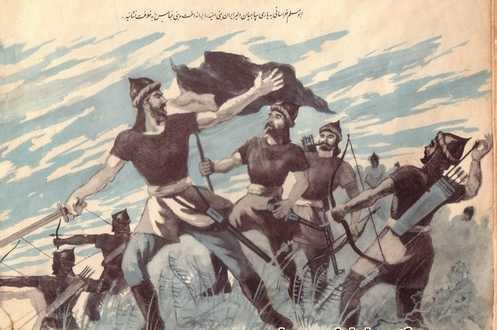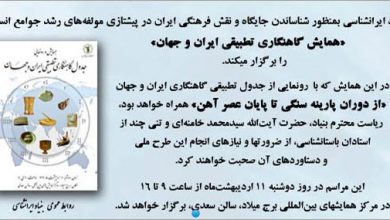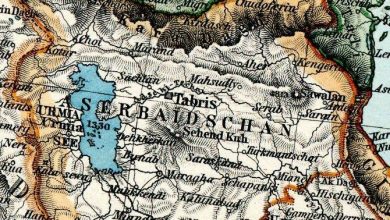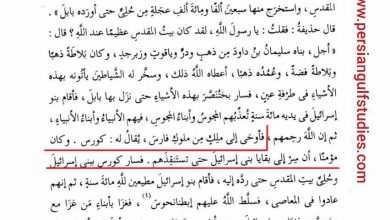Biography of Abu Moslem Khorasani (The great Iranian general)

Abu Muslim Khorasani (718-755 AD) He was one of Iran's military commanders and the leader of the Black Jamgan movement, who was able to overthrow the Umayyad dynasty and establish the Abbasid dynasty..
His real name was Behzadan, son of Vandad, who was changed to Abd al-Rahman on the advice of Ibrahim Imam, one of the elders of Bani Abbas, and with his order, he left for Khorasan to lead the anti-Umayyad movement in this region..
…
After defeating the ruler of Khorasan and conquering Maro, he sent an army to Iraq and was able to defeat Marwan, the last Umayyad caliph, in 132 AH.. With the accession of Abu al-Abbas Abdullah Safah as the first Abbasid caliph, the Emirate of Khorasan was entrusted to Abu Muslim.. But his power and influence were worrying for the caliph and those around him. Finally, in 137 AH, Abu Muslim was assassinated by the order of Mansur, the second Abbasid caliph..
The killing of Abu Muslim was the beginning of numerous uprisings and rebellions that were formed due to his bloodlust, and some of them occupied the Abbasid caliphs for years..
childhood and adolescence
The original name of Abu Muslim, Behzadan, the son of Vandad Hormoz, is mentioned. His name is also mentioned by Abu Ishaq Ibrahim bin Haikan. Some consider him to be a descendant of Shidosh son of Guderz or Raham son of Guderz. Also, some sources have brought his lineage to Bozorgmehr.
However, Abu Muslim was also addressed as Abd al-Rahman during his lifetime. This name change is apparently due to the request or order of Imam Ibrahim (One of the elders of the Bani Abbas family who tried to depose the Umayyads and seize the caliphate) There have been; Because he considered Abu Muslim's Persian name and lineage to be an excuse for the enemies of the Abbasids.
Abu Muslim Khorasani was probably born in 100 AH in Merv or Isfahan. However, other historical traditions have been narrated about the place and time of his birth; As it is not easy to make a clear opinion on this matter. There is a possibility that Abu Muslim's origin and parentage remained unknown, deliberately by the Abbasid government in order to minimize the role of others in overthrowing the Umayyad government..
As a child and teenager, he served a family named Ajali in Kufa and was in prison for a while until he was assigned by Ibrahim Imam to invite the people of Khorasan to follow the Abbasids at the age of nineteen or twenty..
Source : Zarinkub, two centuries of silence and the great Islamic encyclopedia, Abu Muslim Khorasani (entrance)
Siah Jamgan movement
Abu Muslim Khorasani's youth was parallel to Marwan's caliphate. During this period, oppression, corruption, and division were widespread among the Umayyad rulers, and in particular, the people of Khorasan were under a lot of pressure and oppression.. During this period, two Arab tribes, Bani Tamim (Harmful) and Azdi (Yemeni) who lived in Khorasan, had strong ethnic differences, and each of them, when he reached the emirate, played the members of his clan and rejected the members of the opposite clan.. Therefore, there was a very suitable potential for the formation of anti-Umayyad anti-Bani movement in Khorasan. The elders of Bani Abbas also considered Khorasan as a base for inviting people to themselves with the nobles of this matter. As they had appointed different people to invite people from different cities of Khorasan. These people were called Abbasid preachers or inviters, and at the time of Abu Muslim's arrival, they had been active in Khorasan for more than twenty years..
After meeting Imam Ibrahim in Kufa, Abu Muslim went to this region to invite the people of Khorasan to Bani Abbas. Abu Muslim's courage and bravery caused all the people who were dissatisfied with the rule of Marwan, the last Umayyad caliph, to gather under his banner very soon..
At the beginning of the movement, Abu Muslim did not name a specific person to invite the people and take their allegiance, and he chose one of the Bani Hashem family, which was accepted by everyone. (Reza from the family of Muhammad) was inviting. Until on the first day of Shawwal in the year 129 AH equal to July 21, 747 A.D., by raising a black flag in a village called Sefidanj, in the Marv provinces, he declared his uprising.. The beginning of the invitation was that on the day of Eid al-Fitr, all the supporters performed the Eid prayer under the leadership of Suleiman bin Kathir, and Suleiman, on the order of Abu Muslim, performed the prayer and sermon contrary to the order of the Umayyads. Almost at the same time, the Abbasid preachers in the cities of Khwarazm , Taleghan, Takharistan, Balkh and Marroud revealed the invitation according to the order given to them by Abu Muslim.. After the beginning of the invitation, within seven months, a large number of the enemies of Bani Umayyad joined Abu Muslim.
To start his movement, Abu Muslim used the black flag as a symbol of the movement and ordered his troops to wear black clothes, and for this reason, his followers were known as the Black Jamgan and his uprising was known as the Black Jamgan Movement.. Since the Umayyads had green flags and wore green clothes, choosing a color other than green as the symbol of this group was noticed by Abu Muslim.. The reason for choosing black color was that Abu Muslim considered himself and his group to mourn Zayd bin Ali and his son Yahya bin Zayd.. Some consider this work by Tasi Abu Muslim to Shidush son of Guderz (According to a tradition, he is considered one of his ancestors); Because after Siavash was killed, Shidosh put on a black dress and rose to seek his blood.
It has also been narrated that Abu Muslim asked his slave to wear clothes of different colors and finally, among the different colors, he liked the black color, which was more awe-inspiring..
The beginning of the black Jamgan movement was when in Meru, two Azdi tribes (Yemeni) and Mozri were fighting with each other; The Yemenites were led by Jadie Kermani and the Mudaris were led by Nasr bin Siyar, the ruler of Khorasan.. An independent group of Kharijites, led by Shiban bin Salma, had power and influence in this region. Abu Muslim used this opportunity to gather his followers and at the same time, by sending letters to the leaders of the Yemenis and the Khawarij, he invited them both to friendship and alliance with him.. He tried to prevent these tribes from uniting with each other.
As the movement gradually gained strength, Nasr bin Siyar tried to prevent people from joining Abu Muslim with propaganda. His agents spread rumors among the people that this group is idol worshipers and abusers of people's wealth and honor. In one of the wars that took place between Abu Muslim and the forces of Nasr bin Siyar, one of Nasr's commanders named Yazid was captured.. Abu Muslim was able to use this opportunity to break the rumors; Instead of killing him, he ordered that he be treated and released, on the condition that, after his release, he would speak only the truth about his observations during captivity.. In this way, after returning, Yazid testified that this group is Muslim and pious.
With the danger he felt from Abu Muslim, Nasr bin Siyar sent a letter to Marwan, the Umayyad caliph, asking him to send an army to Khorasan to suppress the movement.. But Marwan himself was involved in internal strife and could not meet Nasr's request. After being disappointed with the Caliph's help, Nasr tried to bring the Yamani and Khawarij groups with him to eliminate Abu Muslim, and although he succeeded in this task, Abu Muslim's politicking prevented the formation of an alliance.. In the next step, Nasr tried to unite with Abu Muslim himself, but finally Abu Muslim united with the Yemenites and was able to defeat Nasr bin Siyar in 130 AH.. After the conquest of Merv by Abu Muslim, Nasr fled to Sarkhes and from there to Nishabur. After the conquest of Merv, Abu Muslim also killed the leaders of the Yemeni tribe and the leader of the Khawarij to consolidate his power..
After the conquest of Merv, Abu Muslim was thinking of attacking Iraq. This idea was implemented in the year 132 AH equal to the year 749 AD and Abu Muslim's army was able to defeat Marwan's army of 100 thousand people in an area called Zab near Mosul.. This war was led by Qahtaba bin Shabib and after his death, his son Hassan. Abu Muslim was not personally present in this battle. In this way, with the defeat of the last Umayyad caliph, the Umayyad rule was extinguished, and the Bani Abbas rule began with the accession of Abu al-Abbas Abdullah Safah.. After the defeat in this battle, Marwan fled to Damascus and then to Egypt, where he was killed in 750 AD.
Source : Encyclopedia Britannica, Abū Muslim (entrance) And Zarinkub, Two Centuries of Silence, and Safa, Brave Veterans and the Great Islamic Encyclopaedia, Abu Muslim Khorasani (entrance)
During the reign
With the accession of Safah as the Abbasid caliph, the governance of the central and eastern regions of Iran was entrusted to Abu Muslim.. During this period, Abu Muslim had a lot of power and influence among the people. He also had great influence on the Abbasid caliph and in many cases the caliph did not make decisions without his opinion or approval..
During his rule, Abu Muslim faced rebellions from the Alawites and encroachments from the Chinese, who suppressed all of them.. He was able to develop his influence across the Nile and brought cities such as Sogd, Bukhara and Balkh under his rule..
During the Emirate of Khorasan, Abu Muslim started construction and construction and built numerous prayer houses and ramparts in cities such as Samarkand and Merv..
During this period, Abu Muslim had titles such as Sahib al-Dawa, Sahib al-Dawla and Amin al-Muhammad. He was called Sahib Da'wa because he revealed the uprising against the Umayyads, and the title of Sahib Al-Dawla was also because he was considered the founder of the Abbasid government..
Abu Muslim's power and influence and his autocracy in interacting with the caliph caused the caliph's relatives, including his brother and crown prince Mansur, to be suspicious of Abu Muslim and try to convince the caliph to conspire against Abu Muslim.. It has been reported that the rebellion that took place by Ziyad bin Saleh, the emir appointed by Abu Muslim in the cities of Sogd and Bukhara, was incited by the Abbasid caliph, and Abu Muslim, after defeating this rebellion and killing Ziyad bin Saleh, sent his head to the caliph..
This suspicion intensified when Mansoor went to Khorasan as the emissary of the Caliph to consult with Abu Muslim regarding the order to kill Abu Salama Chalaq. Because he observes Abu Muslim's arrogance and after returning, he tells the caliph that if Abu Muslim wants, he can destroy the Abbasid caliphate.. And if the caliph wants his work to be consistent, he should call Abu Muslim and kill him.
In the year 136 AH, Abu Muslim, after obtaining permission from Safah, left for Iraq to go on Hajj from there.. In this trip, Mansour also accompanied Abu Muslim and on his return, the news of the Caliph's death reached them. Therefore, Mansour, who was in charge of the Ahed governorship, introduced himself as the caliph in a letter to Abu Muslim, and Abu Muslim also congratulated him.. At the beginning of his caliphate, Mansur faced a rebellion from his cousin who did not pledge allegiance to him and called himself caliph.. Although this rebellion was quelled by Abu Muslim within a few months, the reports that Mansoor was receiving about Abu Muslim's arrogant and mocking reactions to his letters made him extremely worried, and therefore he decided that before Abu Muslim to leave for Khorasan, he lost him.
Death
Abu Muslim Khorasani was finally killed in the month of Sha'ban in the year 137 AH equal to the year 755 AD by the order of Mansur, the Abbasid caliph.. He was probably 37 or 33 years old at the time of his death.
The conspiracy to kill Abu Muslim occurred when Abu Muslim, after defeating the Caliph's enemies in Iraq, planned to leave for Khorasan without returning to Mada'in.. But since the caliph was afraid of the greatness of Abu Muslim in Khorasan, he asked him in a letter to come to him.. Abu Muslim did not intend to accept this invitation at first, but finally he accepted. Upon Abu Muslim's arrival, the caliph honored him and asked him to come to him the next day. The next day, the caliph ordered some of his soldiers to hide and come out and kill Abu Muslim when the caliph clapped his hands three times.. Upon the arrival of Abu Muslim, the caliph first took his sword with a trick and disarmed him, and then opened his tongue to condemn him and, among other things, blamed him for killing Suleiman bin Kathir, and when he was faced with Abu Muslim's arrogant response, his hands He hit him three times until the soldiers left their position and killed him.
the dead
During the period of struggle and after that, during the period of governance, Abu Muslim had to kill enemies, traitors, rebels or other people who were considered dangerous for the Black Jamgan movement or the Abbasid government.. He was very strict in dealing with his enemies and did not show any mercy or compassion. It has been narrated from Abu Muslim himself that more than one hundred thousand people were killed by his order. Among the people who were killed by the order of Abu Muslim (Or it is believed to be so)The names of famous people can be seen, some of them are among Abbasi's advocates and some are among his allies..
Some consider the main reason for Abu Muslim's killing of the Abbasid claimants to be his politicking and believe that these claimants knew him at the time when he was a slave in the service of Arab families and therefore had a contemptuous view of him. So that the popularity and glory of Abu Muslim in Khorasan did not prevent his reputation from being tarnished by these veteran claimants..
Source : Zarinkub, two centuries of silence and the great Islamic encyclopedia, Abu Muslim Khorasani (entrance)






From what I understand, Abu Muslim Khorasani is from Afghanistan because the previous name of Afghanistan was Khorasan and you stole from us..
Dear friend, in the history that you are referring to, the current Afghanistan was a city except for Iran and the civilization of Iran
In my opinion, the first condition of historiography is that :To tell the truth, let's not tell the truth and tell the truth.
Welcome to the service of my dear author with reference to the sentence “The first rule of historiography is not to tell falsehoods ” We agree that the above statement is true and an Iranian has been working hard for the liberation of Iran from the Arabs for years and giving his life in this way, but still some Arabs are afraid of the name of Siah Jamgan on a football team and they are trying to change the name of the team and so on. How easy can we deal with this issue, in the hope of Azad********************